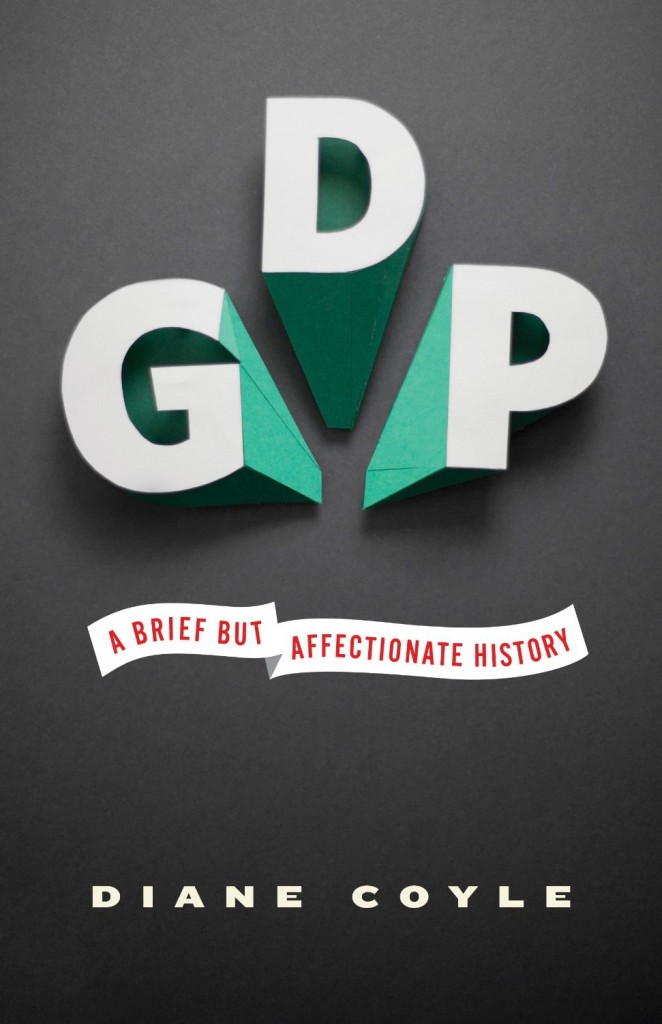 This is a short book. It should be judged by short book rules.
This is a short book. It should be judged by short book rules.
1) The book is aimed at giving a general understanding to readers not familiar with all of the assumptions that go into the calculation of GDP.
2) The book uses no math to explain what is a highly mathematical topic, and yet gets the main points across.
3) The book explains the controversies surrounding GDP in a simple way that most people could understand, and does not make you head spin with economic gibberish.
4) ?The book explains many of the important strengths and weaknesses of the GDP calculation. ?Maybe that should read — what GDP can measure, and what it does not measure.
5) It explains in simple terms the difference between “real” (inflation-adjusted), and “nominal” (unadjusted) GDP. ?It could have spent more time on that topic, I think, because the issues around price indexes (including the implicit price deflator, which was not mentioned) are significant.
6) The book motivates the history of how GDP calculations come to be, morphing from a way to figure out taxation capacity in wartime, to a figure that guides the economic policies of bureaucrats that tinker with something bigger than themselves, and they do not understand it (but won’t admit it).
7) The book drives home the idea that much helpful human action is *not* captured in GDP, and likely *can’t* be captured in GDP. ?Also it shows how many harmful actions (i.e. pollution, etc.) are not captured in GDP.
Now some will criticize some omissions of this book, and minor inaccuracies, but I am not going to beat on those, because this is a short book, and not meant to be deep for experts to contemplate. ?At 140 small pages, it packs a lot in!
After all, there is an alternative. ?You could go an buy an intermediate macroeconomics textbook used by many universities. ?It will be in many ways more technically precise. ?There will be a lot more math, and esoteric discussions. ?It will lose average people, who will say “I’m glad I am not an economist.”
This book will not provoke that response. ?It is meant for average people, not experts, who need to get a basic grip on what GDP means and does not mean.
My Main Misgiving
If I were writing this book, I would recast this book into the need to estimate a balance sheet of the US, complete with liabilities ?and intangible assets. ?After all, the income statement describes the change in balance sheets across two periods. ?Imperfectly, that could help us deal with intangibles that don’t get counted (E.g. all of the book reviews that get written for free, but give people a better idea of what to buy). ?Even though the estimates will remain very imperfect, and maybe worse if we try this with intangibles, it might give us a sense of how much good we do as a society. ?It would also make the financial sector net out for the most part, the value of which is difficult to measure.
Summary
If you want a basic book that teaches you in a non-technical way how and why one of our most basic economic statistics is calculated, this book will give you that. ?And if you want that, you can buy it here:?GDP: A Brief but Affectionate History.
Full disclosure: The PR people asked me if I wanted a copy of the ?book, and I said “yes” and they sent it.
If you enter Amazon through my site, and you buy anything, I get a small commission.? This is my main source of blog revenue.? I prefer this to a ?tip jar? because I want you to get something you want, rather than merely giving me a tip.? Book reviews take time, particularly with the reading, which most book reviewers don?t do in full, and I typically do. (When I don?t, I mention that I scanned the book.? Also, I never use the data that the PR flacks send out.)
Most people buying at Amazon do not enter via a referring website.? Thus Amazon builds an extra 1-3% into the prices to all buyers to compensate for the commissions given to the minority that come through referring sites.? Whether you buy at Amazon directly or enter via my site, your prices don?t change.
